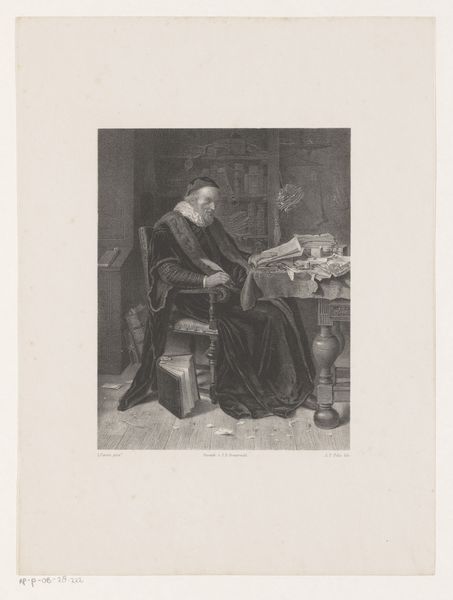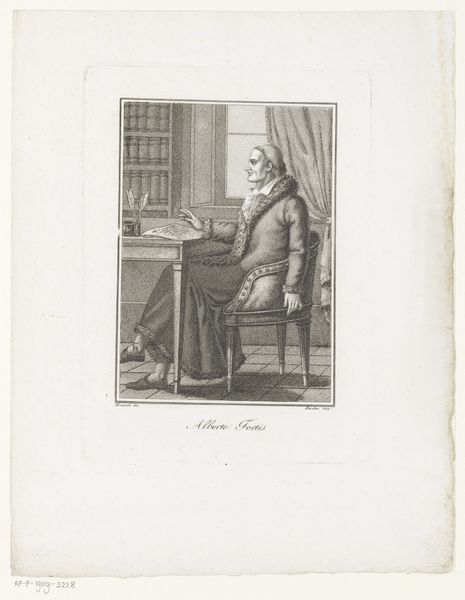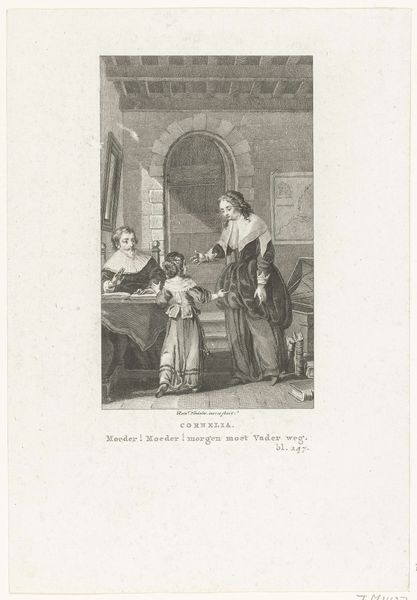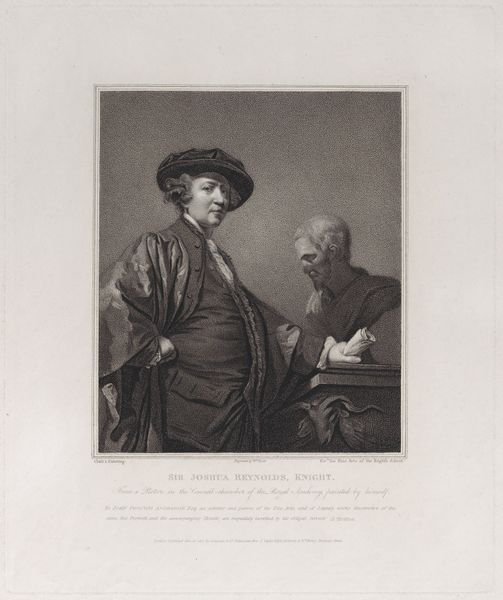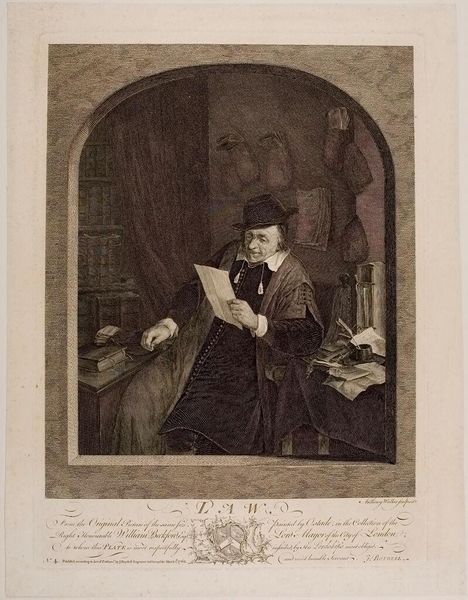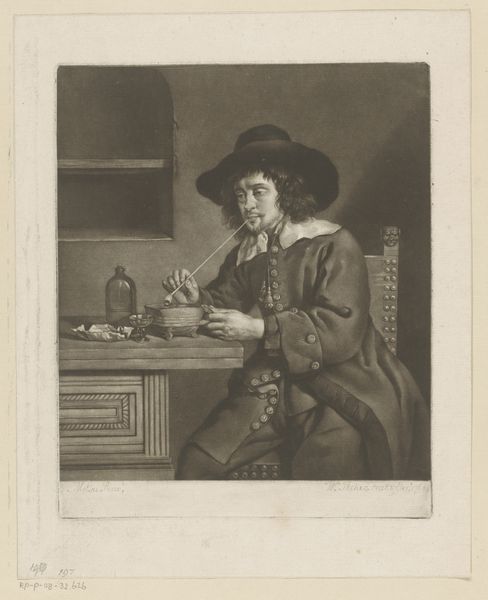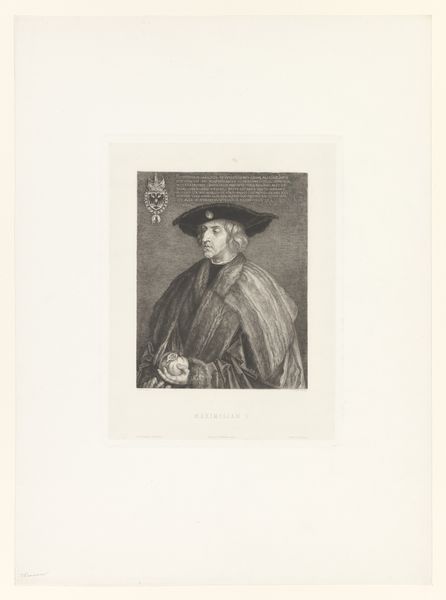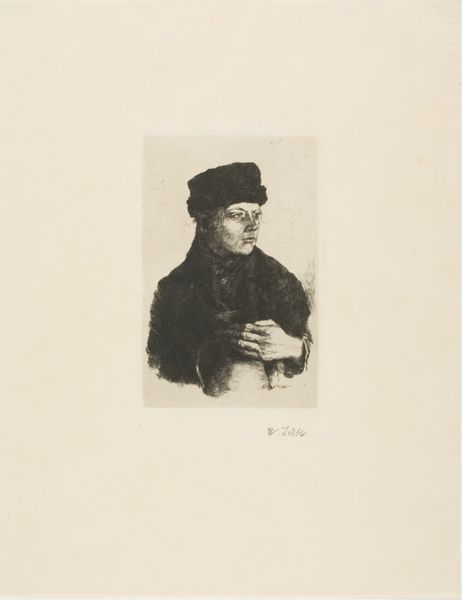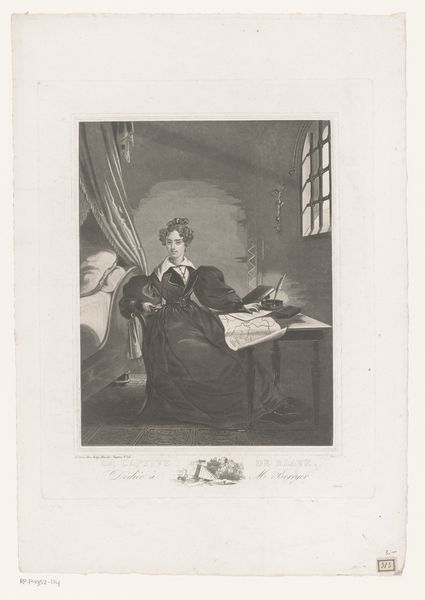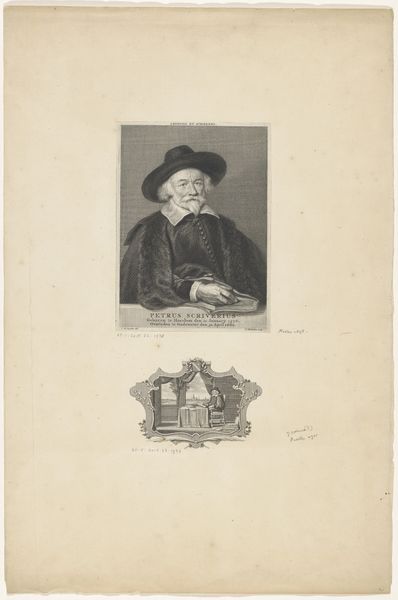
Portret van een onbekende man, mogelijk Jacob van Mosscher 1833
0:00
0:00
print, engraving
#
portrait
#
16_19th-century
# print
#
genre-painting
#
engraving
#
realism
Dimensions: height 460 mm, width 360 mm
Copyright: Rijks Museum: Open Domain
Curator: Gijsbertus Craeyvanger created this piece, “Portrait of an Unknown Man, possibly Jacob van Mosscher,” in 1833. It is currently held here at the Rijksmuseum and was realized using the engraving medium. What strikes you initially about this work? Editor: It's quite formal, almost austere, yet there’s a sense of activity about it. He looks caught in a moment, pen in hand, and that checkered floor creates this dynamic tension with his static pose. You immediately want to know what’s he writing! Curator: Given it’s an engraving, let’s think about production. The artist reproduced an existing painting by someone else, turning oil and canvas into line and shadow. This reproductive aspect meant it could reach a broader audience, and, importantly, mediate perceptions of a certain status or class through circulated imagery. Editor: Yes, the distribution of this engraving highlights the burgeoning print market and art's move toward a wider, less elite audience during that era. Also, his clothing -- look at the detail in his slashed sleeves, that pristine ruff! -- Speaks to this burgeoning middle class imitating aristocratic dress codes and how fashion can reflect those desires. Curator: Precisely! The material details themselves broadcast societal shifts. The original painting, assuming this identification is correct, depicts a burgomaster from Rotterdam – a powerful figure whose likeness became, through the act of reproduction and dissemination, a symbolic object detached from the physical constraints of oil and panel. Editor: Thinking about its role within art history: The museum space shapes how we interpret its historic and socio-political import. Is it displayed to illustrate the history of engraving? Or perhaps to provide context for Van Mosscher and civic power during this period? Each method shapes our comprehension, adding layers to the meaning derived from simply seeing an image. Curator: Very insightful. Considering its creation and display provides critical context. Thank you! Editor: Absolutely! Analyzing how societal currents influence an artist and artwork broadens our ability to truly observe.
Comments
No comments
Be the first to comment and join the conversation on the ultimate creative platform.

